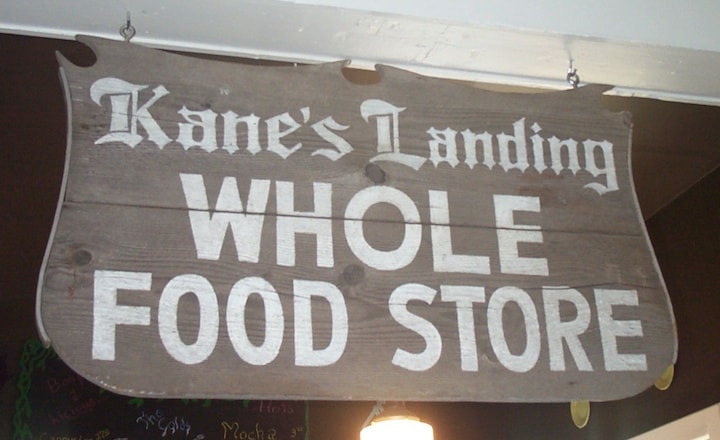Ninety-eighth in a series on West Kootenay/Boundary place names
We’ve seen over the last few weeks that while some people believed Kaslo honoured a placer miner named John Kasleau, the prevailing theory has always been that the name was derived from a First Nations word — although whether it was Ktunaxa or Sinixt isn’t well established.
“Kaslo and Slocan are Indian names and are bestowed in honor of ancient families of the Kootenays. They are proper names and have no interpretation,” claimed the Kaslo Claim of May 12, 1893.
In a letter to the chief geographer at Ottawa, published in The Kootenaian on Aug. 31, 1905, J.W. Cockle wrote: “The name Kaslo according to the evidence of an old Kootenay Indian named Sebastian who claims that his grandfather told him the names of stopping camps on Kootenay Lake is derived from the word Cassoloe, a blackberry. The affix –a to this denotes a place where blackberries grow, this when modified by use results in the word Ah-kas-loe by which name the place was known to the Indians — Kaslo, the place where blackberries grow.”
Sarah Helena Nash Keen, in a 1925 letter to the Dept. of Mines said she was surprised to hear the John Kasleau explanation, first proposed by David Kane in 1905, “as I was under the impression the name Kaslo was Indian and meant ‘plenty berries’ or ‘many berries.’”
According to Dorothy Kennedy and Randy Bouchard in First Nations Ethnography & Ethnohistory in BC's Lower Kootenay/Columbia Hydropower Region: “It should be noted that the plant species referred to was likely not blackberry but black hawthorn (Crataegus douglasii), the Kutenai term for which is transcribed as kala in a Kutenai ethnobotanical study — presumably Cassoloe was Mr. Cockle’s attempted transcription of kala. The fact that the name for Kaslo is written as qaslu on a [1995] map of Kutenai territory and place names suggests that this place name is indeed derived from the word kala (‘black hawthorn’).”
According to the Ktunaxa Language Program, the traditional name for the site is ?aqastu, pronounced a-kas-thoo.
However, James Teit recorded an Okanagan-Colville name for a place on Trout Lake, kali’so, which fellow anthropologist Verne Ray elicited as sia’uks qa-li’su. Could this be the origin of Kaslo? Journalist Lance  Whittaker suggested as much in the Nelson Daily News of April 16, 1947.
Whittaker suggested as much in the Nelson Daily News of April 16, 1947.
Kennedy and Bouchard don’t say if they considered the possibility, but wrote: “The portion of Ray’s transcription that is written as sia’uks is recognizable to us as the prefix which we transcribe as i7a7ks- and which means ‘place of’ in the Okanagan-Colville language. We do not know what Okanagan-Colville term Teit and Ray were transcribing, however, even though Ray provided the translation ‘where the water flows outward.’”
While Teit only said kali’so was an old village on Trout Lake, Ray’s translation and identification of its location indicates it was what we now call Gerrard.
Another puzzling thing: in a 1933 Spokane radio broadcast, David Kane claimed Kaslo was originally called Kane’s Landing after himself and brother George, and it has been commonly accepted since.
While it’s entirely plausible, the only contemporary reference to Kane’s Landing indicates otherwise. According to the Nakusp Ledge of Aug. 9, 1894: “There is no truth in the rumor that Kaslo would have its name changed to Kane’s Landing.”
There was no explanation of what precipitated that remark. Whatever the circumstances, might Kane have misremembered them more than 40 years later? Something similar happened with Pilot Bay, but that story will wait until later in this series.
Previous installments in this series
Applegrove, Appleby, and Appledale revisited
Bakers, Birds, and Bosun Landing
Bannock City, Basin City, and Bear Lake City
Bealby Point (aka Florence Park) revisited
Boswell, Bosworth, Boulder Mill, and Broadwater
Brooklyn, Brouse, and Burnt Flat
Camborne, Cariboo City, and Carrolls Landing
Carmi, Cedar Point, Circle City, and Clark’s Camp
Carson, Carstens, and Cascade City
Christina City and Christian Valley
Cody and Champion Creek revisited
Champion Creek revisited, again
Columbia City, Columbia Gardens, and Columbia Park
Crawford Bay and Comaplix revisited
Dawson, Deadwood, and Deanshaven
English Cove and English Point
Forslund, Fosthall, and Fairview
Fort Shepherd vs. Fort Sheppard, Part 1
Fort Shepherd vs. Fort Sheppard, Part 2
Gladstone and Gerrard, revisited
Granite Siding and Granite City
Hall Siding and Healy’s Landing
Hudu Valley, Huntingtdon, and Healy’s Landing revisited
Inonoaklin Valley (aka Fire Valley)
